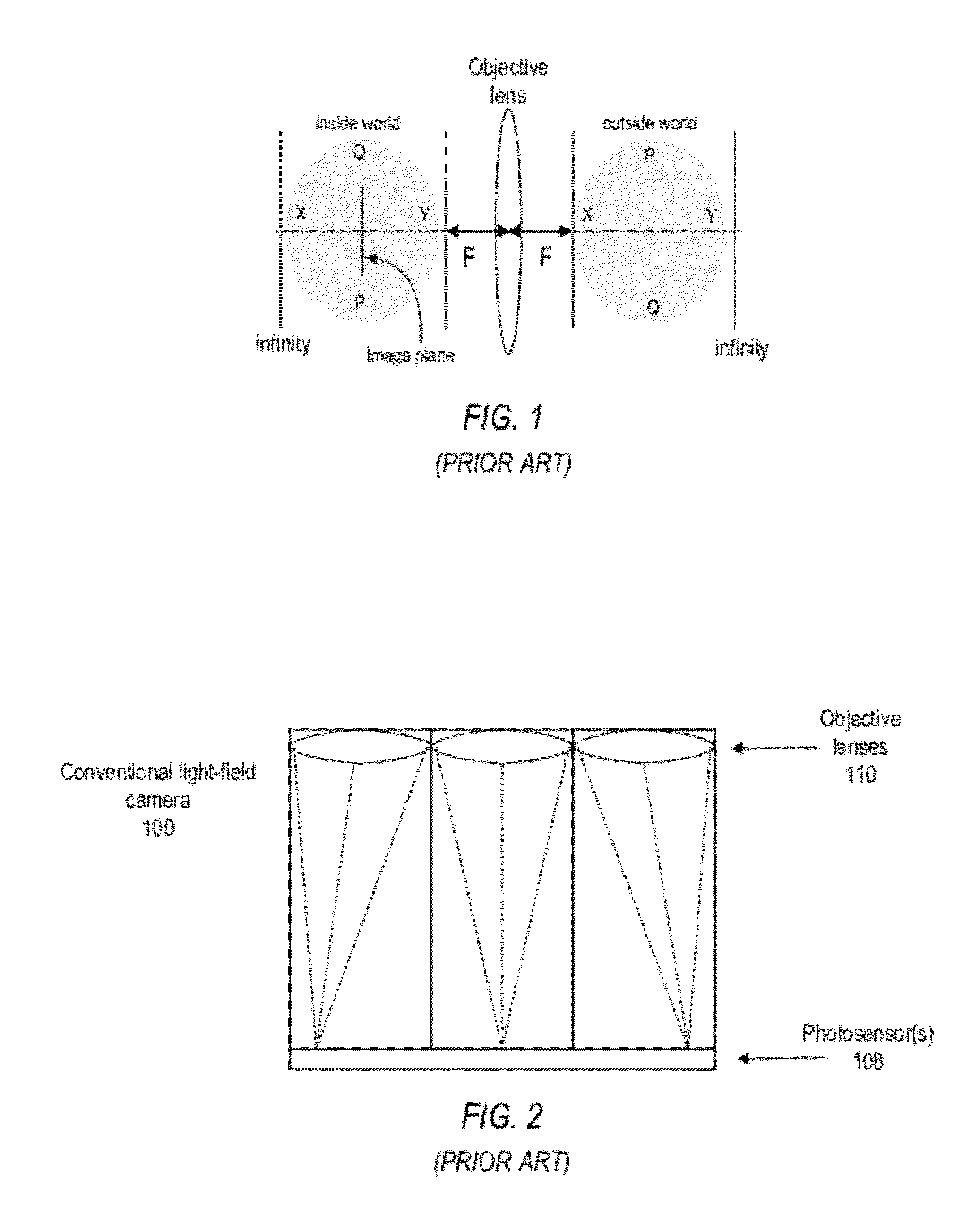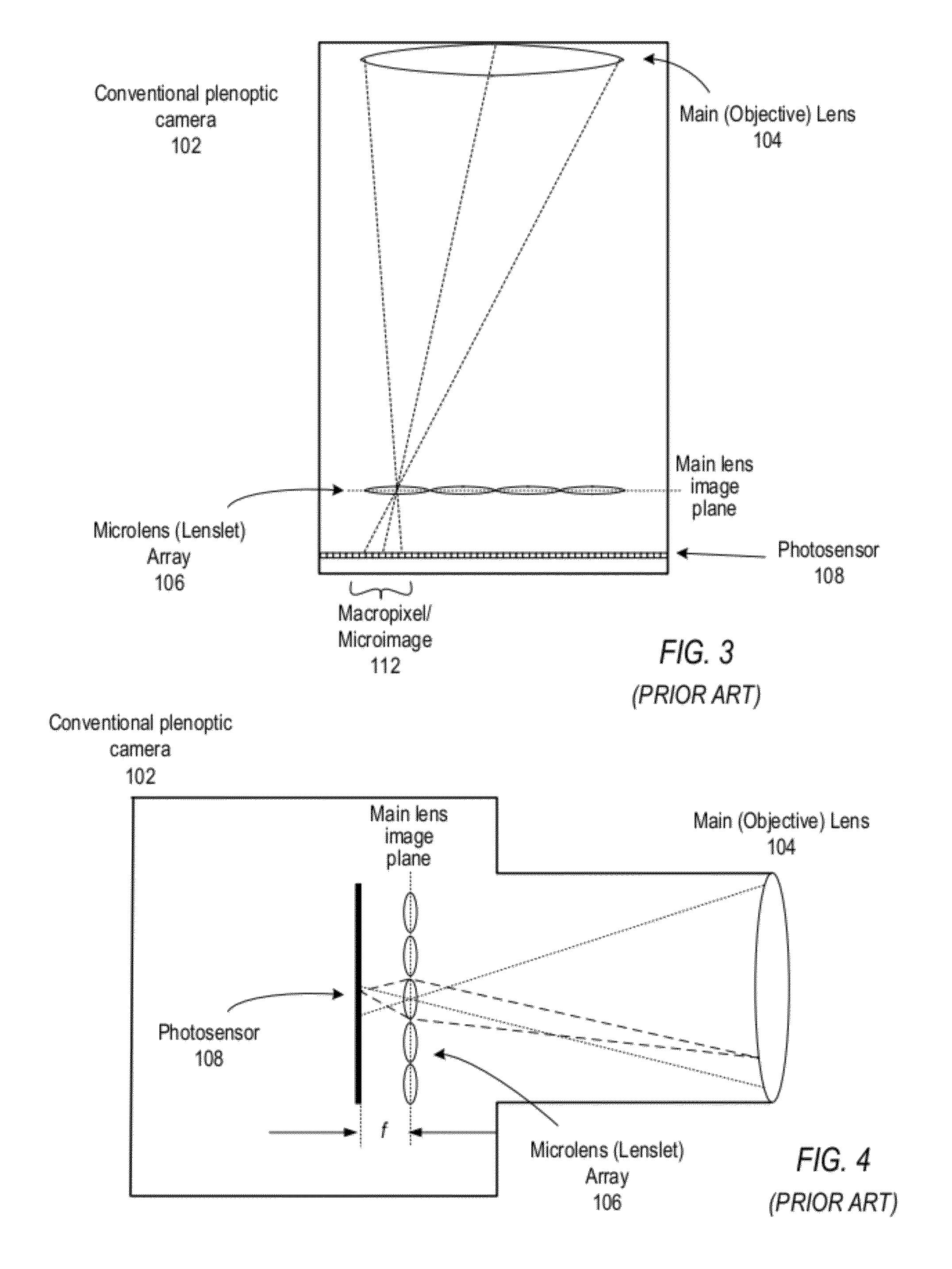[0013]Various embodiments of methods and apparatus for capturing and rendering images with focused plenoptic cameras employing different filtering at different microlenses are described. In a focused plenoptic camera, the main
camera lens creates an image of a scene in front of the camera at the focal plane of the main lens. That image is re-imaged onto the sensor multiple times by an array of microlenses. The microlenses are focused on the image of the scene created by the main lens at the focal plane, instead of being focused on the main lens itself as in conventional plenoptic cameras. This serves to increase or maximize spatial resolution, and thus the focused plenoptic camera achieves sharper, higher spatial resolution
microlens images than those produced by conventional plenoptic cameras.
[0014]In a focused plenoptic camera, if the scene is sufficiently far from the camera, the scene may be considered to be at infinity. The main
camera lens creates an image of the scene at the focal plane of the main lens. Different ones of the microlenses may project identical or nearly identical microimages of the image at the focal plane onto the sensor. Thus, each point of the image at the focal plane is re-imaged onto the sensor multiple times by multiple microlenses in the
microlens array of a focused plenoptic camera. Embodiments may leverage these characteristics of the focused plenoptic camera by applying different optical elements, such as different filters or different apertures, at different ones of the microlenses to capture various characteristics of light, such as luminance, color, polarization, and so on, differently (e.g., at different levels of
exposure for luminance, at different wavelengths of color, at different angles of polarization, etc.) in different microimages. All of the microimages are captured at the same time in a
single image (referred to as a flat) at the sensor. Thus, multiple microimages of the same image of a scene may be captured at different colors, different exposures, different polarities, etc., in a
single image at the same time with a focused plenoptic camera according to embodiments. Images captured using embodiments of a focused plenoptic camera with different lenses may be used in
High Dynamic Range (HDR) imaging,
spectral imaging, and other imaging applications. When the main image created by the main lens of the focused plenoptic camera represents objects from a scene that are at optical infinity, those objects are exactly at the focal plane of the camera, one
focal length from the main lens. The different views of the main image captured by the different microlenses are identical or nearly identical 3D views of the objects, that is identical or nearly identical images, but modified in brightness, color, polarization, or other characteristics. Thus, imaging functions, such as HDR imaging and
spectral imaging, performed according to embodiments may produce precise and high quality output images, such as HDR images, color images, and so on.
[0019]In embodiments employing color filters, different color filters may be employed at different microlenses to thus capture microimages specific to different wavelengths of light corresponding to the respective color filters. The microimages from the raw flat may be appropriately assembled to generate two or more images of the captured scene each corresponding to one of the color filters. Two or more of the images thus generated may be combined to generate color output images of the scene. A focused plenoptic camera using an appropriate pattern of different color filters applied to the microlenses in the array may capture two, three, four, or even more microimages that include the same point in the image in different color channels. Embodiments of a focused plenoptic camera, using a pattern of 100 different color filters at the microlenses may, for example, sample 100 wavelengths of light at each point in an image. Thus, embodiments of a focused plenoptic camera using color filters may provide true
spectral imaging.
 Login to View More
Login to View More  Login to View More
Login to View More 


